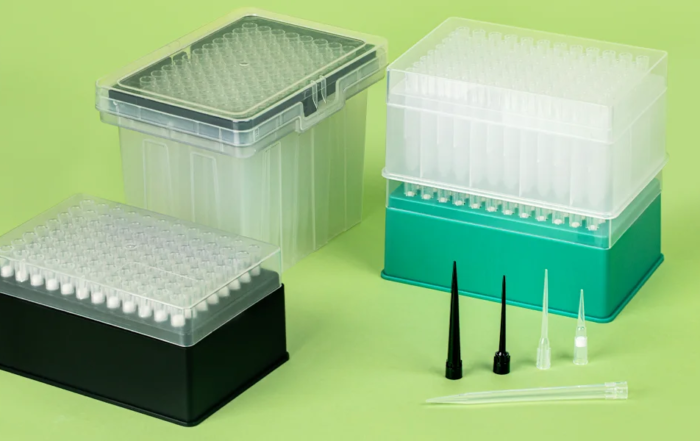Have you been wanting to buy some new centrifuge tubes? Are you unsure which ones to get? If your answer was “yes” to either of these questions, you’ve come to the right place.
First, I’m going to show you what the biggest differences between centrifuge tubes with a conical bottom and free-standing ones are. Then, we’re going to see if any of these can save you money. Finally, we’re going to see which type comes out on top in the end.
Free-Standing vs Conical Bottom Centrifuge Tubes
Now, let’s talk about the biggest differences between tubes with a conical bottom and free-standing ones.
Free-Standing Centrifuge Tubes
These tubes have only recently become popular, so there’s not a lot about them online. Most companies that manufacture medical equipment have just started making them, so you might not be able to find them in every size yet.
But, the one area where they have the conical bottom tubes beat is that they actually save you money. Now, we all know how difficult it is to clean and sanitize your tubes. Once you’ve cleaned them, you have to put them on a special tube rack and wait for them to dry. With free-standing tubes, you don’t need to worry about drying.
What’s more, you never have to worry about the tubes sliding off your table and falling to the ground. Also, most of the free-standing tubes are made out of plastic, so you don’t have to worry about accidentally dropping and breaking them.
Centrifuge Tubes with a Conical Bottom
Now, centrifuge tubes that have a conical bottom are staples in any lab. They come in all different shapes and sizes. What’s more, the only tubes that can fit inside a microcentrifuge are the ones that have a conical bottom.
The smallest size for this tube is 0.5 ml, while the biggest one is 50 ml. You can also get plastic or glass conical tubes. If you’re working with corrosive materials or a high temperature in the centrifuge — buying a glass tube with a conical bottom is the way to go.
But, if you do decide to go for the conical bottom, you also need to get a tube rack. Because they can’t stand on their own, if you’re not careful, they can easily roll off the table.
Things to Consider
Before you make your final decision, there’s a couple of things you should think about. Let’s take a look at some of the differences in pricing, lab conditions, and cleaning.
The Prices
Now, as I mentioned, centrifuge tubes with a conical bottom are more widespread, so they’re usually cheaper compared to free-standing ones. Also, they come in a bigger selection of cap colors and labels.
The price of the tubes will also depend on whether you want to buy glass or plastic centrifuge tubes with a conical bottom. If you decide to go with plastic, you can even buy disposable ones for your microcentrifuge. On the other hand, you do need a tube rack, which can increase your price.
Lab Conditions
Another thing to consider, and maybe the most important one, is how you’re going to use the tubes. Are you going to refrigerate or freeze them? What kind of RPM does your centrifuge produce? Are your samples light-sensitive or not?
For example, centrifuge tubes with a conical bottom increase the accuracy of pipetting. Also, with them, you can reduce the leftover sample waste, so think about the samples you’re working with and how powerful your centrifuge is.
If you need disposable tubes, go with the ones with a conical bottom. But, if you need your tubes to also serve as a container, you might want to go for the free-standing ones.
Cleaning
Cleaning your centrifuge tubes can be tricky business. It’s much easier to clean and sanitize glass tubes than plastic ones. You can clean them by autoclaving or boiling them in some hot water. But, that’s not to say that it’s impossible to clean plastic centrifuge tubes — it just might take a bit more effort.
Bottom Line
In the end, it all comes down to what you’re going to use the tubes for and what kind of centrifuge you have. My recommendation would be to get a couple of each to see which ones work best for you and your lab.
Recent Posts
PCR Seal Films: The Practical Guide
While often considered a simple consumable, the choice and application of PCR seal films are critical yet frequently underestimated aspects of successful PCR workflows. An inadequate seal can lead to devastating consequences: sample evaporation [...]
Steps for sorting and processing laboratory plastic waste
Laboratories around the world generate a significant amount of plastic waste every day. According to a 2015 study published in Nature, scientific research labs produce over 5.5 million tons of plastic waste annually, with [...]
Ultimate Guide to Robotic Pipette Tips 2025
In the realm of laboratory science, where reproducibility and exactitude define success, precision instruments play a mission-critical role. Among these, pipetting systems stand as indispensable pillars of accurate liquid handling. As laboratories increasingly adopt [...]


